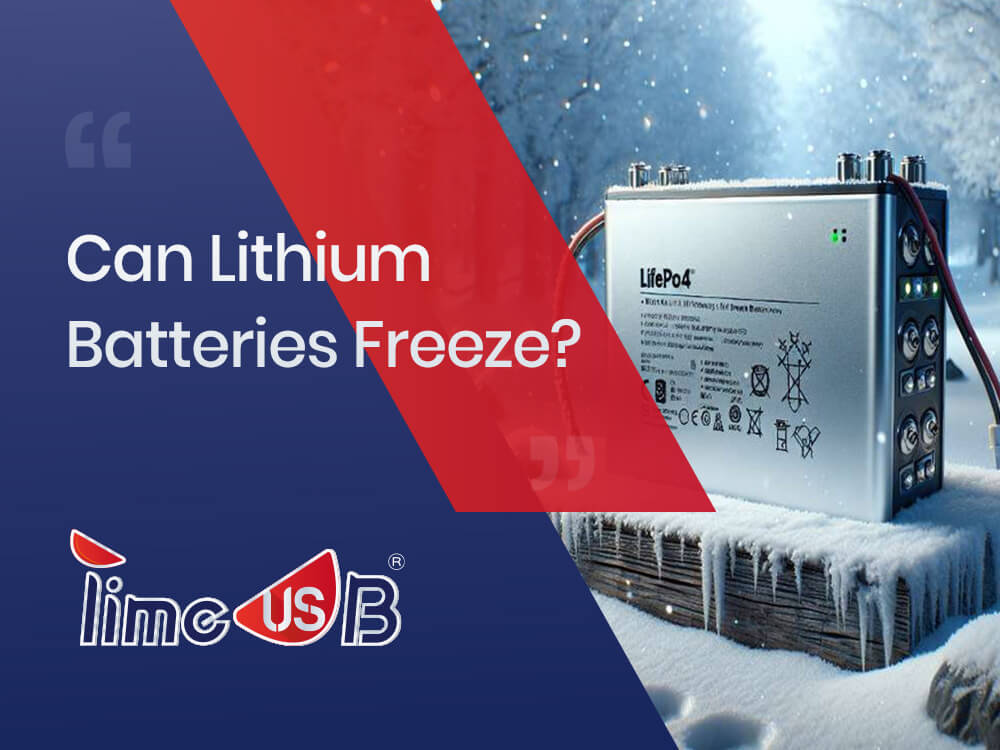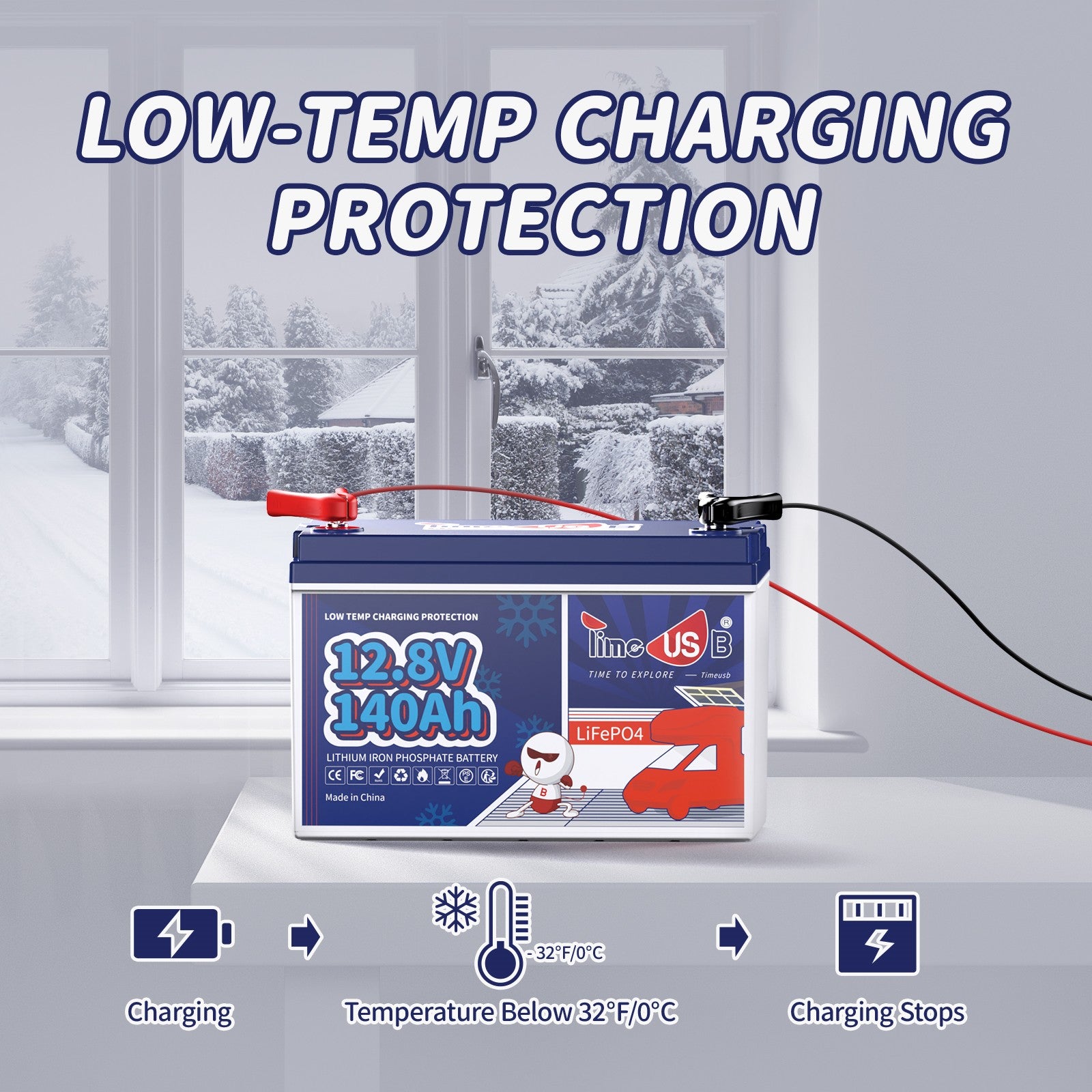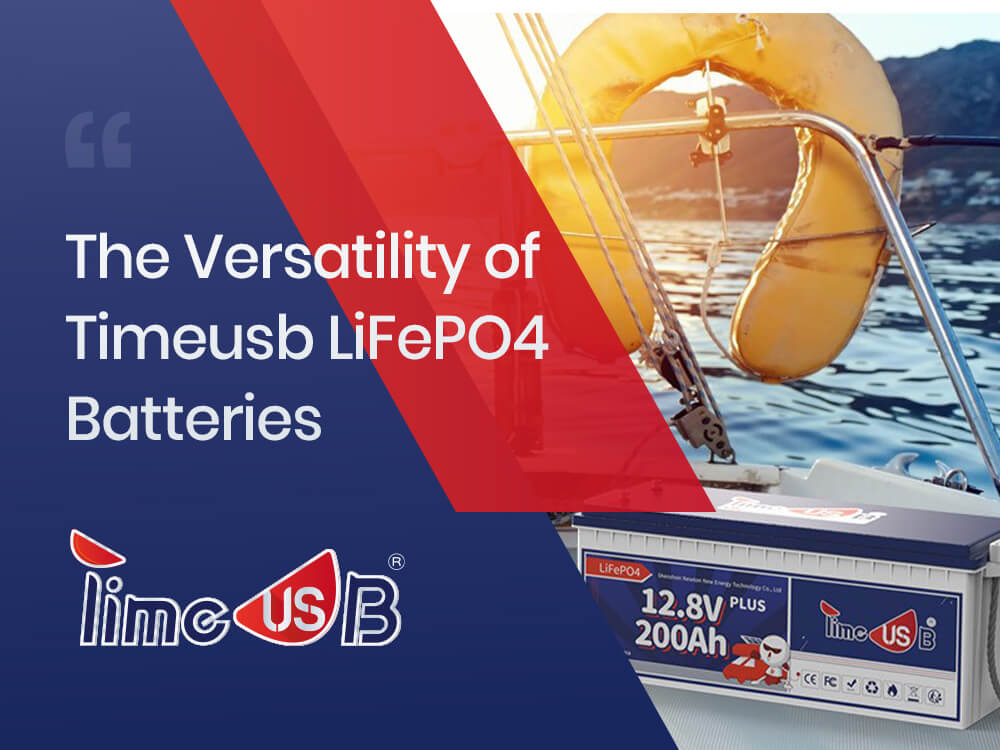Can Lithium Batteries Freeze? Why is Low-Temperature Protection Important to LiFePO4?

When discussing high-efficiency energy storage, lithium iron phosphate (LiFePO4) batteries are often at the forefront due to their stability, safety, and longevity. However, operating them in extreme temperature conditions, particularly in the cold, raises valid concerns about their performance and lifespan. This brings us to an important question: Can lithium batteries freeze?
Understanding the impact of low temperatures on LiFePO4 batteries and the significance of low-temperature protection is essential for both the longevity of the battery and the efficiency of the device or vehicle it powers.
Can LiFePO4 Batteries Freeze?
LiFePO4 batteries are designed to withstand various temperature ranges, yet like all batteries, they have their limitations. Technically, LiFePO4 batteries do not "freeze" in the traditional sense since they do not contain liquid electrolytes that turn into ice. However, at temperatures below 0°C (32°F), the chemical reactions within the battery can slow down significantly, leading to reduced efficiency, lower power output, and potential long-term damage if the battery is forced to operate or charge under these conditions.
The Impact of Low Temperatures on Lithium Battery Efficiency
Lithium batteries can be notably affected by cold climates. Low temperatures cause the battery's electrolyte solution to become more viscous, which in turn impedes the flow of ions and slows the chemical reactions within the battery. Consequently, the battery experiences a decline in capacity, a drop in the power it can deliver, and an increase in internal resistance. This can lead to the battery failing to operate at its maximum capacity and possibly shutting down without warning, particularly in severe cold weather.
Moreover, frequent exposure to cold temperatures can hasten the deterioration of the battery, diminishing its expected lifespan. It is essential, therefore, to adopt protective strategies and implement measures designed for low-temperature environments to ensure that lithium batteries retain their optimal functionality and durability when operating in colder conditions.
Temperature Constraints on Lithium Battery Performance
Recognizing the temperature constraints is crucial when utilizing lithium batteries within devices that operate under varying thermal conditions. Lithium batteries function optimally within a core temperature range of approximately -20°C to 60°C (-4°F to 140°F) when discharging. For charging purposes, it is paramount to maintain the temperature within 0°C to 55°C (32°F to 131°F) to avoid safety hazards. Charging outside of these limits can cause dangerous outcomes such as battery explosions or irreversible battery damage.
Here's a quick guide to the thermal limits for lithium batteries:
- Operational Temperature Range: Generally, lithium batteries are safe to use within a range of -20°C to 60°C (-4°F to 140°F). They are designed to perform effectively within these limits.
- Charging Temperature Range: Optimal charging occurs between 0°C to 45°C (32°F to 113°F). Charging within this window promotes efficient energy uptake and helps circumvent potential issues. Learn more about How to Charge LiFePO4 Lithium Battery?
- Storage Temperature Range: For storage, it's advised to keep lithium batteries at a mild temperature spectrum, around -10℃ to 50℃ (14℉ to 122℉). This range helps retain the battery's charge capacity and longevity.Delve into our comprehensive guide for storing LiFePO4 batteries for more details.
Note that these are broad recommendations and specific lithium battery variants or manufacturers might provide distinct operational and charging temperature guidelines.
Moreover, it's important to underline the dangers of charging lithium batteries outside the suggested temperature brackets. Charging under excessively cold conditions can inhibit chemical activity leading to permanent capacity loss, whereas charging in excessive heat may precipitate overheating, thermal runaway, and combustion. It is always best to refer to the guidance provided by your battery's manufacturer for the most accurate temperature-related instructions.
What is Low-Temperature Protection to LiFePO4 Lithium Batteries
Low-temperature charging protection is a safety feature for lithium iron phosphate (LiFePO4) batteries designed to prevent charging in conditions that could be harmful to the battery's health and longevity, specifically when the ambient temperature is too low.
LiFePO4 batteries—and lithium batteries in general—are sensitive to temperature extremes. Charging at low temperatures can induce lithium plating on the anode, which is a condition where lithium ions do not properly intercalate (insert) into the anode material but instead form metallic lithium on the anode's surface. This plating can permanently reduce the battery's capacity and pose a safety risk.
Here's how low-temperature charging protection works:
- Temperature Sensors: The battery management system (BMS), an electronic system which monitors and regulates the battery's operation, includes temperature sensors that detect the temperature of the battery cells.
- Resume Normal Operations: If the sensors detect that the ambient or cell temperature has dropped below a set threshold (commonly around 0°C or 32°F), the BMS will automatically prevent the battery from charging.
- Automatic Interruption: The BMS will allow the charging to resume once it detects that the temperatures have risen back to a safe range for charging.

To circumvent the problems associated with low-temperature charging, manufacturers sometimes integrate heating systems either within the battery or as an external feature to bring the battery's temperature up to a safe charging range before allowing the charge cycle to commence.
Why is Low-Temperature Charging Protection Crucial to LiFePO4 Lithium Battery
Low-temperature charging protection is crucial for LiFePO4 (lithium iron phosphate) batteries due to the following reasons:
1. Risk of Lithium Plating
Charging LiFePO4 batteries at low temperatures can lead to lithium plating, a condition where instead of intercalating into the anode, lithium ions form metallic lithium on its surface. This reduces the number of lithium ions available for charging and discharging, effectively decreasing the battery's capacity and useful life.
2. Safety Concerns
Metallic lithium is highly reactive and can pose safety risks, including short-circuiting, which may lead to battery failure or even thermal runaway—a condition that could potentially lead to fires or explosions.
3. Battery Longevity
Consistent charging in low-temperature conditions causes degradation of the electrodes within the battery, leading to reduced cycle life. This means the battery will not last as long as it is designed to, necessitating premature replacement.
4. Performance Assurance
LiFePO4 batteries are known for their stable performance and long-term reliability. Low-temperature charging protection is integral to maintaining these qualities, ensuring that the battery performs optimally over its intended lifespan.
5. Energy Efficiency
When a battery is charged at low temperatures, increased internal resistance can occur, requiring more energy to achieve the same level of charge, thus decreasing overall energy efficiency.
6. Regulatory Compliance and Standards
Safety standards for lithium batteries may require such protection mechanisms to be in place to ensure the safety of the consumers and the operability of the system the batteries are employed in.
7. Maintenance of Warranty
Some manufacturers might void the warranty if it’s found that the battery has been charged under conditions that do not meet the specified operational guidelines, including temperature specifications.
8. User Convenience
The protection system automates care for the battery, relieving users of the need to constantly monitor external temperatures before and during charging cycles.
To encapsulate, low-temperature charging protection systems are not just a protective measure; they are an essential component that upholds LiFePO4 batteries' reputable safety profile, longevity, and performance. Given their increasing application in critical settings such as electric vehicles, renewable energy storage, and portable electronics, ensuring these batteries operate safely and effectively is of the utmost importance.
Batteries Highly Recommended to Use for Winter Conditions
The Timeusb 12V 140Ah LiFePO4 battery is equipped with a sophisticated 100A BMS (Battery Management System) to safeguard against excessive charge, discharge, overcurrent, and short circuits, as well as temperature extremes.
It features a low-temperature cutoff that ceases charging if the cell temperature drops below 32℉ (0°C) to prevent damage.
Comprised of automotive-grade cells arranged in an optimal configuration, this 12V 140Ah lithium battery is engineered to deliver up to 15,000 deep cycles with a lifespan extending over 10 years, ensuring reliable and enduring performance.
Utilizing high-quality automotive-grade cells arranged for peak efficiency, this 12V 140Ah lithium battery boasts the capacity to sustain up to 15,000 deep cycles and has a projected service life of over a decade, promising dependable and continuous operation.
The unit showcases an exceptional energy density at 64.23Wh per pound and is remarkably lightweight at just 27.9 pounds—an impressive contrast to the heavier 12V 100Ah lead-acid batteries that typically weigh around 55 pounds, effectively offering equivalent storage for half the weight.
FAQs about Low-Temperature Protection
1. What is low-temperature protection for LiFePO4 batteries?
Low-temperature protection is a safety feature that prevents a LiFePO4 battery from charging when the ambient temperature falls below a certain threshold, typically around 0°C (32°F). This feature is crucial to prevent damage to the battery cells, which can occur if they are charged at temperatures deemed too low.
2. Why can't LiFePO4 batteries be charged at low temperatures?
Charging LiFePO4 batteries at low temperatures can lead to lithium plating on the anode, which can permanently reduce battery capacity and pose significant safety risks, including the potential for short circuits or thermal events.
3. How does low-temperature protection work?
Low-temperature protection works by using temperature sensors integrated into the battery management system (BMS). If the sensors detect temperatures below a set threshold, the BMS will prevent the charging circuit from activating and stop the battery from accepting a charge until temperatures return to a safe range.
4. At what temperature does low-temperature protection typically activate?
The activation temperature for low-temperature protection varies based on the battery's design and the manufacturer's specifications but commonly is around 0°C (32°F).
5. Can I disable low-temperature protection if I need to charge my battery in cold conditions?
No, you should not disable low-temperature protection. This feature is integral to the safe operation and long-term health of your LiFePO4 battery. Attempting to charge the battery without this protection in cold conditions could lead to irreversible damage or safety hazards.
6. Does low-temperature protection affect the discharging of LiFePO4 batteries?
Low-temperature protection primarily affects charging. Most LiFePO4 batteries can safely discharge at lower temperatures than they can charge, but performance may be reduced. Always check the manufacturer's specifications for safe discharge temperatures.
7. What happens if the LiFePO4 battery is accidentally charged at a temperature below the safety threshold?
If a battery is charged below its safe temperature threshold, there is a risk of lithium plating, which could permanently reduce its capacity and lifespan, and increase the risk of failure or even cause a short circuit, leading potentially to a fire or explosion.
8. How do I ensure that my LiFePO4 battery stays within a safe temperature range?
To ensure safe temperature range, store and operate the battery in environments that fall within the manufacturer's specified temperature limits. If necessary, use insulation, heating blankets, or temperature-controlled environments to maintain the battery at safe operating temperatures.
Conclusion
While LiFePO4 batteries may not freeze in the literal sense, it's abundantly clear that low-temperature conditions can negatively affect the battery's function and longevity. Implementing low-temperature protection measures is not just about preserving the battery itself; it's about ensuring the safety, reliability, and efficiency of the entire system the battery powers, whether it's an electric vehicle, renewable energy storage, or a critical backup power supply.



![[Full Guide] The Comprehensive Guide to LiFePO4 Battery Life](http://www.timeusbpower.com/cdn/shop/articles/The_Comprehensive_Guide_to_LiFePO4_Battery_Life_757d2749-9468-4739-ac83-0960c27749b0.jpg?v=1722918256&width=1080)
